It’s back to school time! Today, we’re taking you inside classrooms to show how you’re helping provide groundbreaking learning opportunities for Tibetan Buddhist nuns.
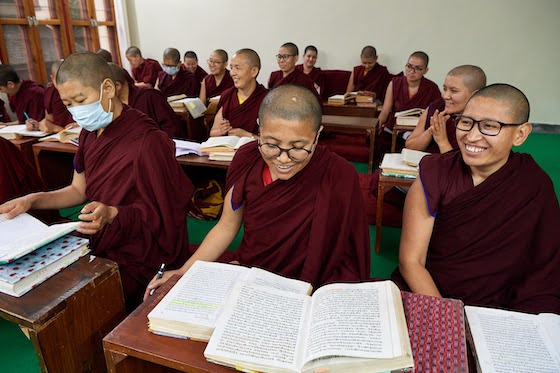
Inside a classroom at Dolma Ling Nunnery and Institute in May 2022. Traditionally, Buddhist nuns have not had the same access to education as monks. The Tibetan Nuns Project aims to elevate the educational standards and the position of women. Photo courtesy of Olivier Adam.
Educating the nuns is the core of our work. In the 1980s and 1990s, hundreds of nuns escaped from Tibet. The overwhelming majority of the nuns were illiterate. Most of the them had had no education in their own language. While in Tibet they were also denied education in their religious heritage.
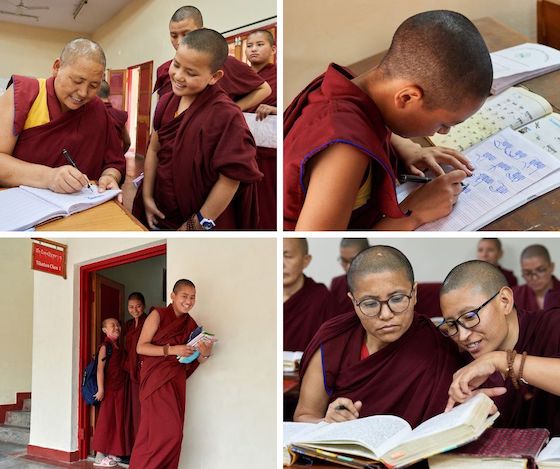
Photos taken by Olivier Adam in May 2022 at Dolma Ling Nunnery and Institute. The top left photo shows Geshema Tenzin Kunsel teaching. The bottom left photo shows nuns leaving one of the Tibetan classes. The nunneries in India are helping to preserve Tibet’s religion, language, and culture.
The Tibetan Nuns Project created an education program for nuns from the ground up. “Today when I see those nuns who didn’t know how to read and write their own names now have Geshema degrees, it is amazing. In a way, 30 years is a long time, but when it’s creating history it is not very long,” said Rinchen Khando Choegyal, Founding Director and Special Advisor to the Tibetan Nuns Project.
The Tibetan Nuns Project also helps women and girls from the remote and impoverished border areas of India such as Ladakh, Zanskar, Spiti, Lahoul, and Arunachal Pradesh. The women and girls from these areas are usually given far less education than men and boys. The nunneries give them a chance for education that they would not have otherwise.
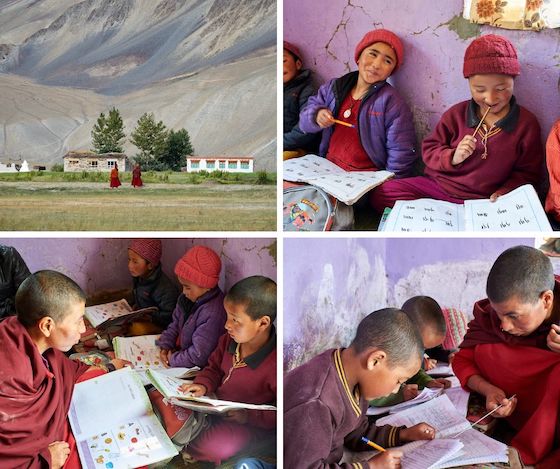
Dorjee Zong Nunnery in located in the remote, high-altitude area of Zanskar in northern India. Girls and women in the Himalayan regions have traditionally been given far less education than men and boys. All photos courtesy of Olivier Adam.
What the Tibetan Nuns Study
A primary goal of the Tibetan Nuns Project is to assist nuns in reaching the same level of education as the monks. Each of the four traditional schools of Tibetan Buddhism has its own specific curriculum and degrees, but they also share a great deal. All are based on the teachings of the Buddha and the Indian commentaries that developed to explicate them.
Exactly which commentaries the nuns most rely on varies between traditions as do the number of years of study, but there is uniformity as to the basic topics. All the nuns study:
- Logic and Epistemology, which provide the basic tools for advanced philosophical study
- Perfection of Wisdom for understanding of the Buddhist path
- Middle Way for understanding of Buddhist philosophy, and
- Tantra for the final level of teachings.
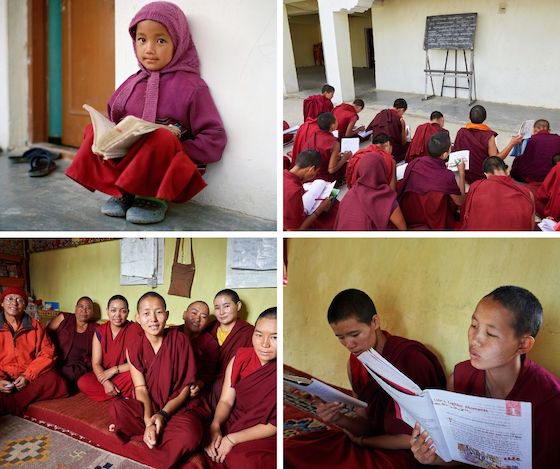
Sherab Choeling Nunnery in India’s Spiti Valley is one of seven Tibetan Buddhist nunneries supported by the Tibetan Nuns Project. This year, nuns from this remote nunnery will take part in the inter-nunnery debate which brings together hundreds of nuns for one month of intensive training in monastic debate. All photos by Olivier Adam.
At most of the seven nunneries supported by the Tibetan Nuns Project, courses are also offered in Tibetan language, English, and computer skills, as well as in ritual arts such as sand mandalas and butter sculpture. The smaller nunneries in more remote areas are at earlier stages in the educational process.
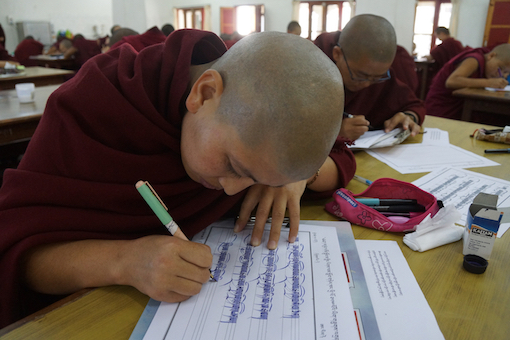
Tibetan Buddhist nuns taking part in a Tibetan calligraphy competition
In addition to providing basic educational requirements, the Tibetan Nuns Project seeks to elevate the educational standards and the position of women within the monastic community. To prepare the nuns for positions of leadership and moral authority in a culture that is going through challenging times, it is essential to combine traditional religious studies with aspects of modern education.
Why Educating Tibetan Nuns Is So Important
It is a historic time for Tibetan Buddhist nuns and Tibetan Buddhism.
Inside Tibet, nuns and monks are under constant surveillance and are unable to freely practice their religion. There’s a very great risk that the priceless wisdom and teachings of Tibetan Buddhism may be lost.
His Holiness the Dalai Lama, patron of the Tibetan Nuns Project, has said, “The Tibetan Buddhist philosophy is something precious which we can be proud of and should strive to preserve.”
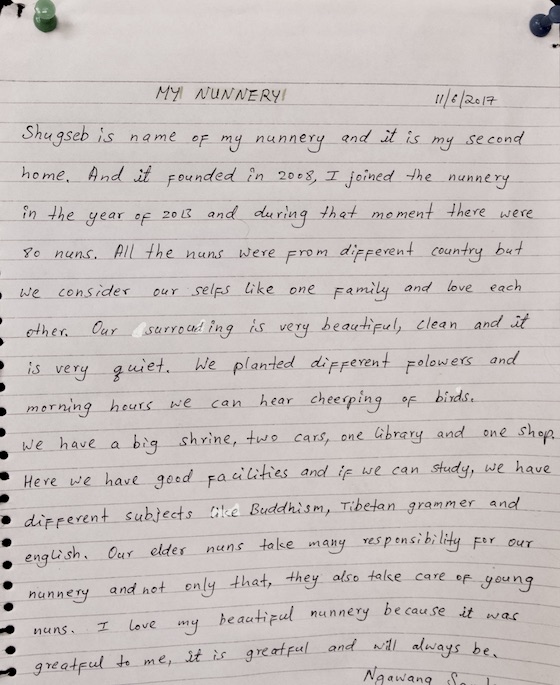
An essay in the English classroom at Shugsep Nunnery and Institute. The original Shugsep Nunnery in Tibet was completely destroyed and then partially rebuilt by the nuns themselves. However, the nuns faced frequent harassment by Chinese authorities and many escaped into exile in India. Shugsep was re-established in exile by the Tibetan Nuns Project.
It is also a time of opportunity for Buddhist women. Never before have Tibetan nuns been able to receive the same education and the chance to study and sit for the same degrees as monks.
For the first time in the history of Tibet, nuns can take the Geshema degree, roughly equivalent to a doctorate in Tibetan Buddhism.
Our focus with the Tibetan Nuns Project has been on helping the nuns to gain the top degrees within their Tibetan Buddhist traditions, so that they could reach the same level of academic proficiency in those traditions as the monks. Our further hope is that they will go on to teach other nuns so that teachers do not always have to be monks.
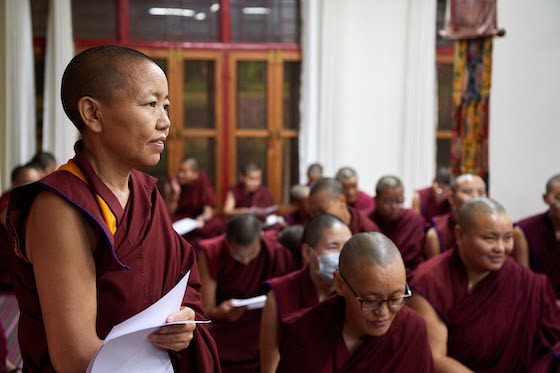
Geshema Delek Wangmo teaching at Dolma Ling Nunnery and Institute. She and Geshema Tenzin Kunsel made history when they were hired in 2019 to teach the nuns there. Photo courtesy of Olivier Adam
Your support has helped bring about these major educational accomplishments:
- The creation of groundbreaking education program for nuns
- Providing debate training for nuns for the first time in the history of Tibet
- Supporting the annual Jang Gonchoe inter-nunnery debate event, which provides one month of intensive training in debate
- Enabling nuns to pursue higher degrees such as the Geshema degree and the Khenmo degree
- Creating a Tantric Studies program for Geshemas to empower them to become teachers and leaders
Do you want to do more to help the nuns? Learn about our Current Projects here and how you can sponsor a nun. More sponsors are always needed.

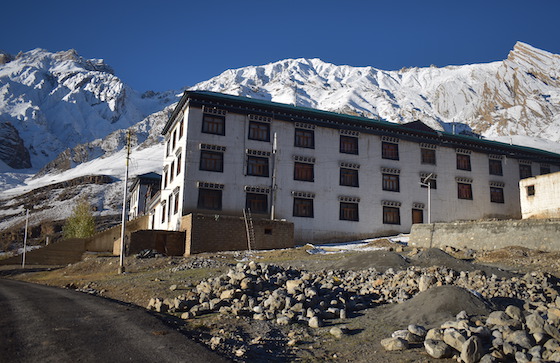
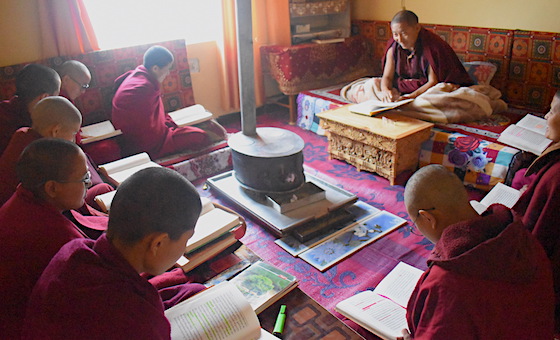

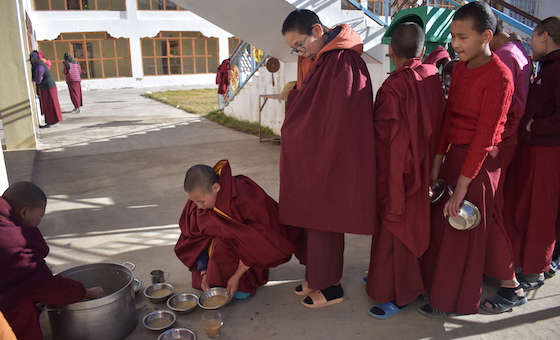
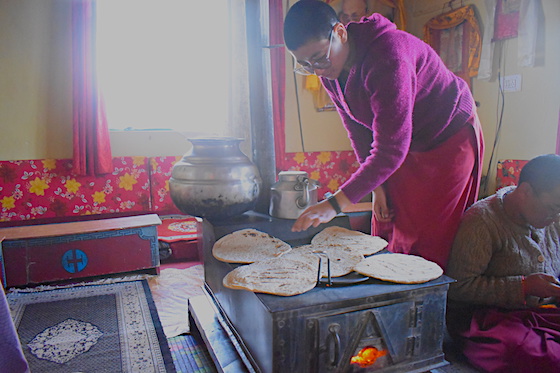

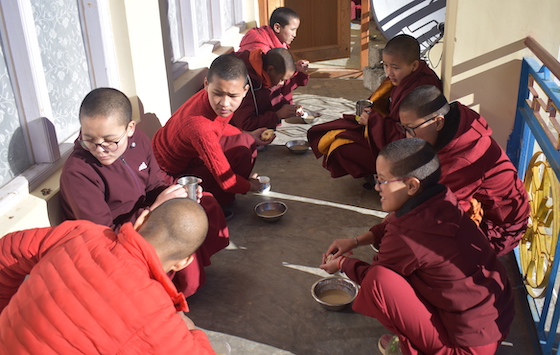

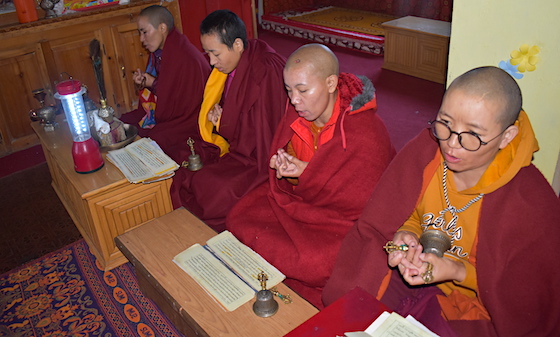


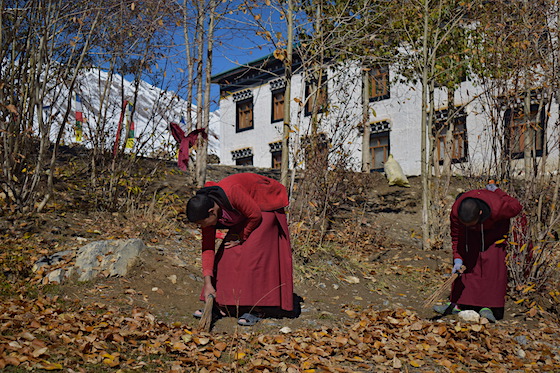

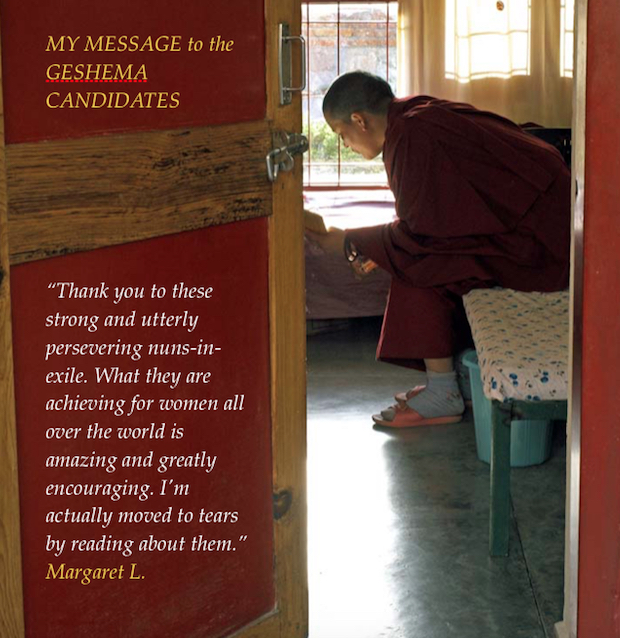
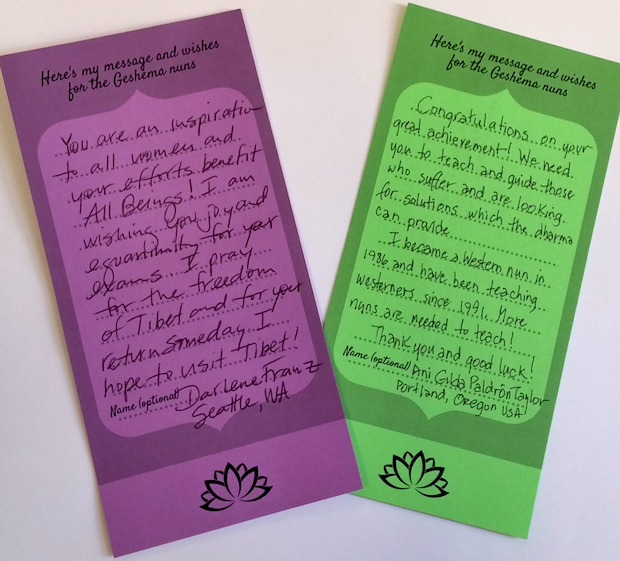

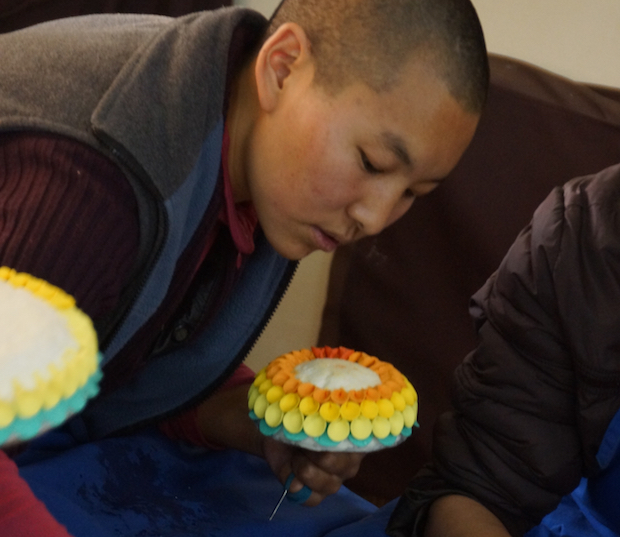
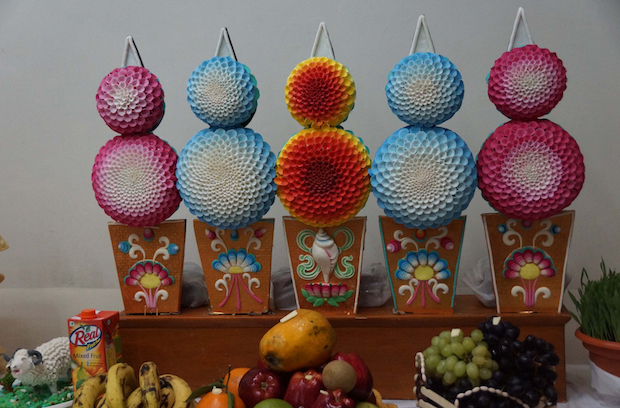
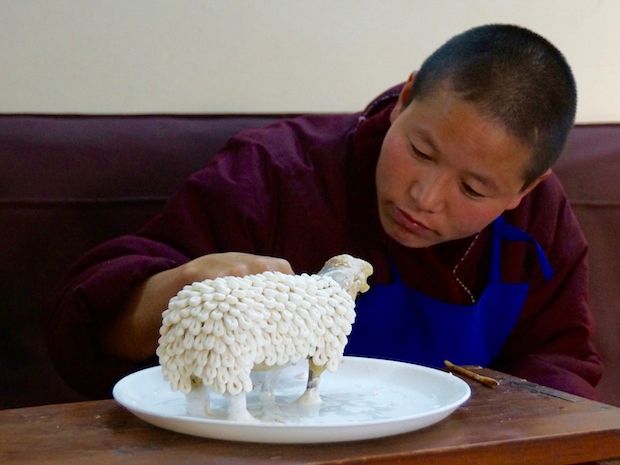
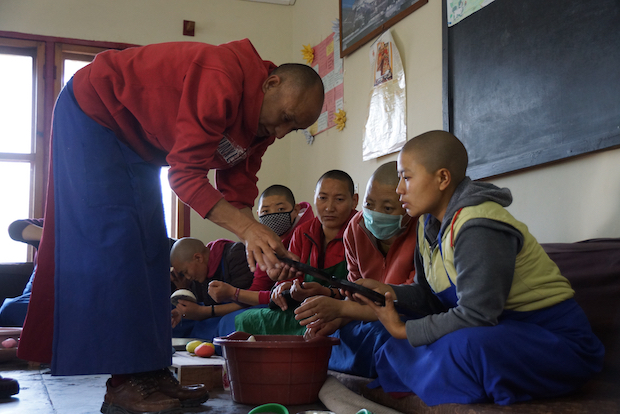
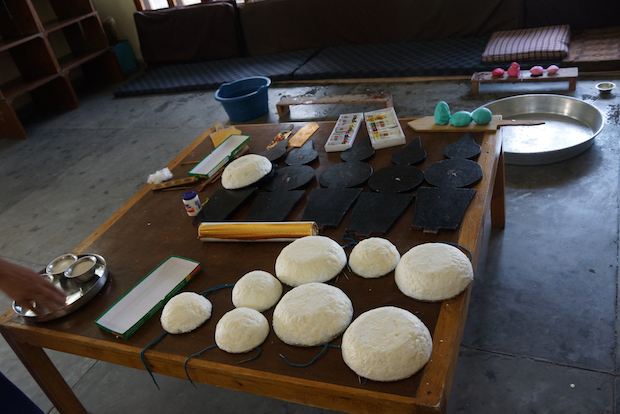
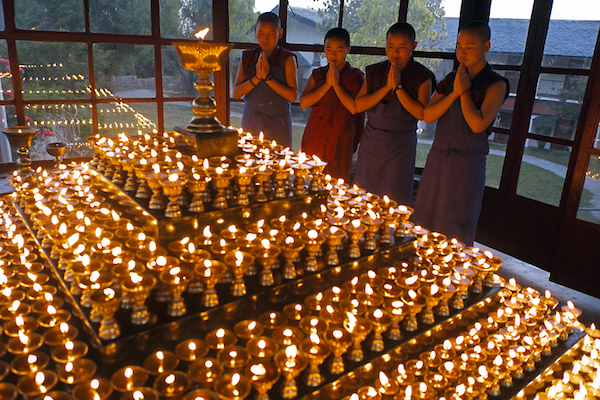
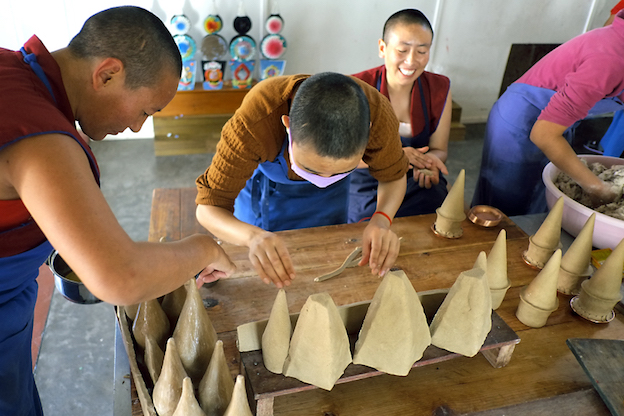
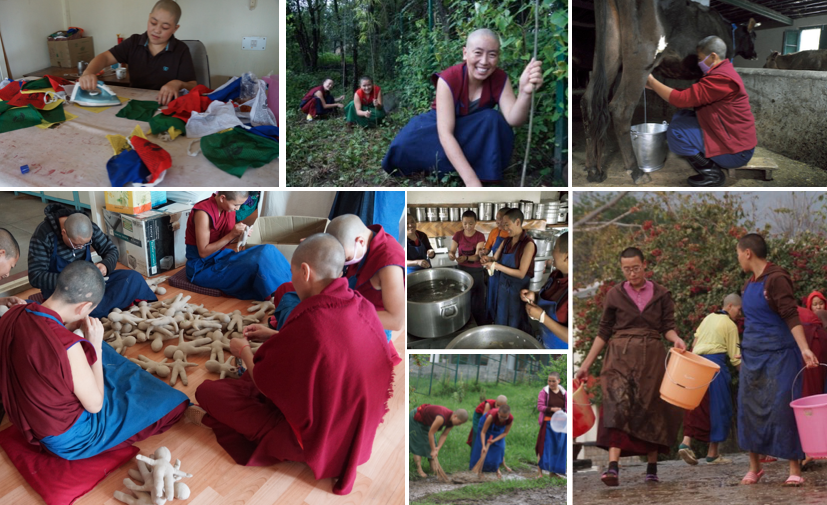
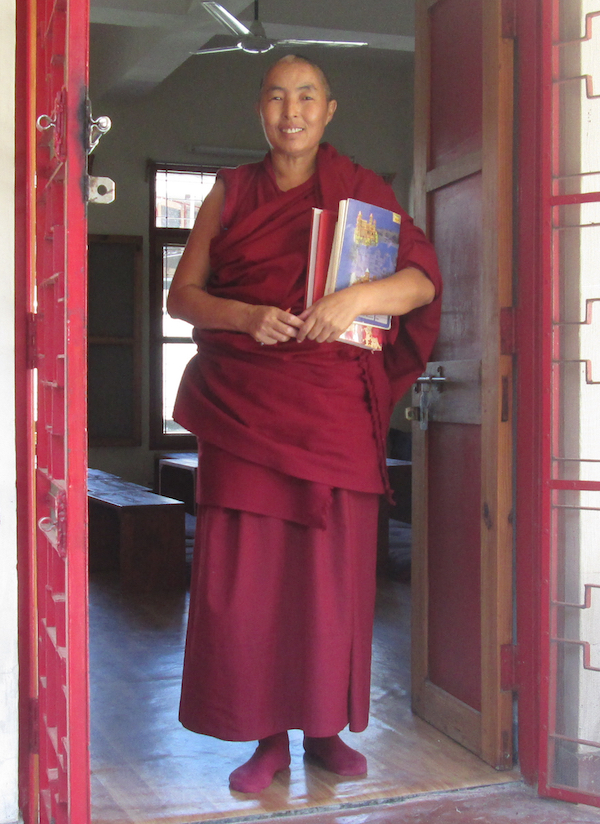
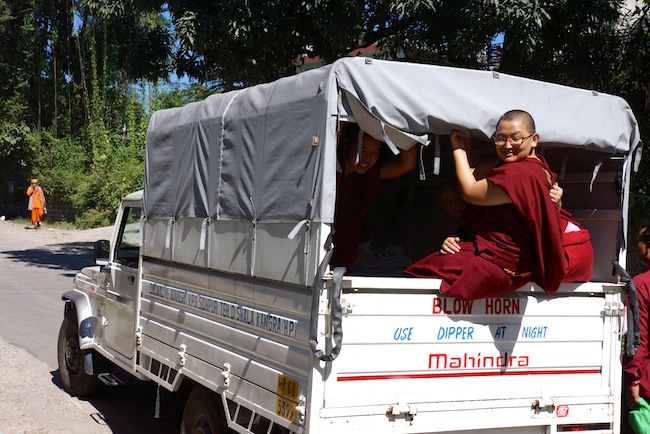
 In August 2015, we travelled for three days over rough, bumpy roads from Leh in Ladakh to Zanskar, a remote area in northern India. Located in this majestic, arid landscape is Dorjee Zong Nunnery, home to 19 nuns.
In August 2015, we travelled for three days over rough, bumpy roads from Leh in Ladakh to Zanskar, a remote area in northern India. Located in this majestic, arid landscape is Dorjee Zong Nunnery, home to 19 nuns.
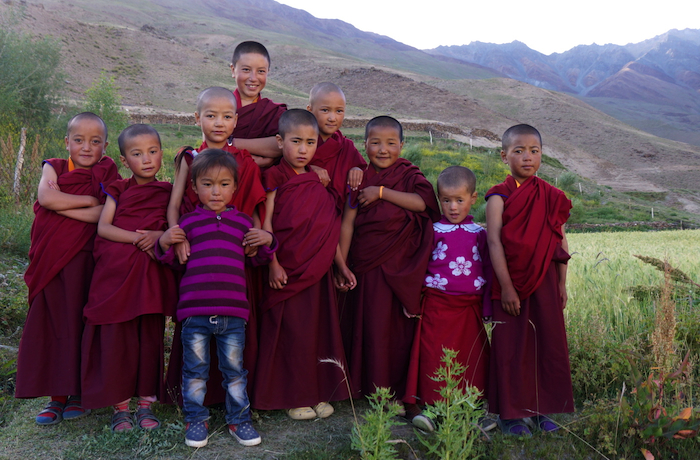
 We’ve been selling our beautiful charity calendar since 1996 to raise funds to support hundreds of Tibetan Buddhist nuns living in India. All proceeds from the sale of the 2016 calendar will help provide food, shelter, health care and education to over 700 nuns living at seven nunneries supported by the Tibetan Nuns Project.
We’ve been selling our beautiful charity calendar since 1996 to raise funds to support hundreds of Tibetan Buddhist nuns living in India. All proceeds from the sale of the 2016 calendar will help provide food, shelter, health care and education to over 700 nuns living at seven nunneries supported by the Tibetan Nuns Project.